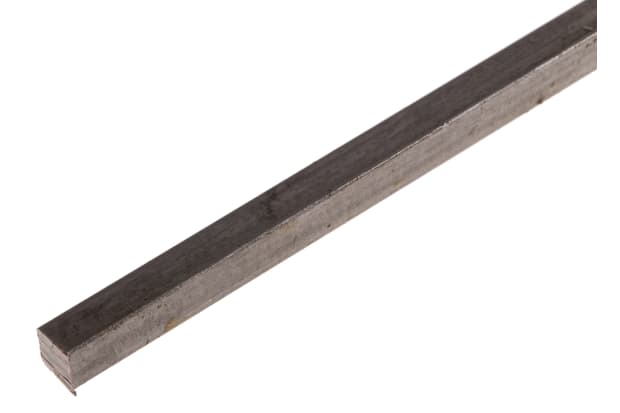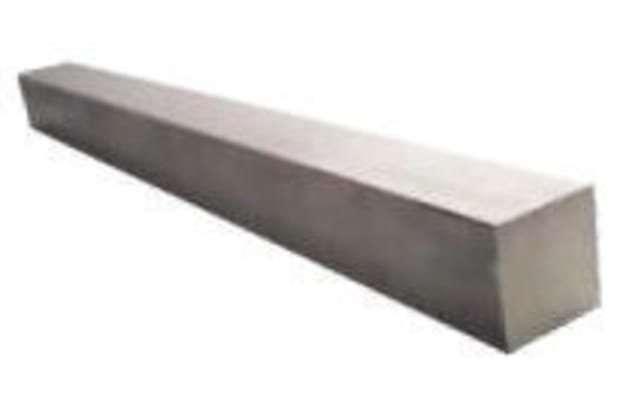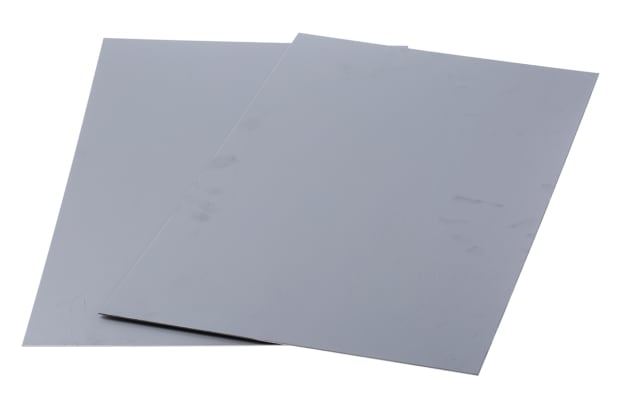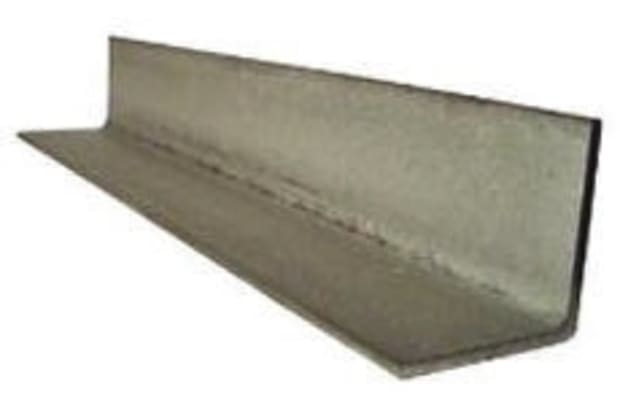- Published 11 Jan 2023
- Last Modified 4 Sept 2023
- 10 min
The Guide to Stainless Steel Rods and Bars
In this guide, we look at the different types of stainless steel rods and bars that are available, common sizes and shapes as well as their uses.

What are stainless steel rods/bars?
Stainless steel bars (also known as stainless steel rods, stainless rounds, or stainless round bars when formed into solid cylinders, as opposed to square bars) are common construction and finishing materials, and are very widely used for a broad range of structural and aesthetic purposes across all manner of industries and applications. Among the many thousands of potential uses of stainless steel rods and bars, some of the more familiar might include:
Architectural design and engineering
Household items, fixtures and products
Medical supplies, machinery and surgical/hygiene tools
Oil/gas pipelines and platforms
Water treatment and supply
Stainless bars boast a range of highly valued characteristics, but by far the most important of these is the one that gives the alloy its ‘stainless’ name: corrosion resistance. This is achieved through the alloying process - stainless steel is a metal alloy whose chief constituents are iron and chromium, and to qualify as stainless steel, the metal must contain no less than 10.5% chromium (in practice it’s often slightly more).
Other common ingredients generally present at varying percentages in stainless steel include silicon, carbon and manganese. Further alloying additions for achieving specific applications/characteristics of the finished product are often introduced during manufacture; these might typically include titanium, molybdenum, nickel, copper or nitrogen. The total quantity of alloying ingredients in a finished piece of stainless steel can frequently be as high as 30%.
We’ll talk more about different types of stainless alloys and their respective qualities a little further on in this guide, but when looking to buy stainless steel online - be it bars, rods, or stainless steel tubes, sheets and angles - you should always be aware that the metal is manufactured and graded in many different ways.
This is done in order to meet varying standards of corrosion resistance for use in very specific types of applications and environments, and it’s why you’ll find so many different ‘grades’ of stainless products listed on the catalogue pages of most stainless steel bar suppliers.
Stainless steel rod and bar sizes
Stainless steel rods and bars are sold in many different basic shapes and formats, including:
Hexagonal bar
Sized by thickness across the flat faces, rather than corner-to-corner
T-Bar (or tee bar)
Commonly used in industry, machinery, commerce and equipment manufacture
Channel (sometimes called u-channel)
Often used in equipment frames and braces, as well as enclosures and housings
There are almost as many different sizes of stainless steel bars and rods available on the market as there are uses for the product - that is to say, a lot. Thankfully, while there’s likely to be a steel bar product made for just about any size or shape of construction need you could imagine, there are also a range of fairly common or universal sizes that tend to be used in a much broader range of different structures and applications. Some of the more common widths you might encounter are:
Stainless steel bar grades

Here’s where buying stainless steel rods and bars - or any stainless product, for that matter - can get really confusing. The ‘grade’ of a stainless alloy product denotes precisely what its intended application or environmental resistance will be, and this is dictated by both the specific chemical/elemental makeup of the alloy in question, as well as any finishing or treatment process it has undergone after casting.
As you can probably imagine given the range of options already outlined in this guide, this leaves us with a bewildering number of potential grades of stainless steel (over 150, in fact, although only around 15 of these are especially common in everyday construction use). Worse still, there isn’t even one universal method for grading stainless steels - while there is often a large degree of crossover, specific grading scales do technically vary from country to country!
Stainless steel grading systems are intended to give users an indication of both the subtype of alloy used, and the range of applications a product is therefore suited to. You’ll typically see them written as numbers, occasionally numbers and letters, with a few common examples being:
304 stainless steel
Denotes general-purpose austenitic alloy
309 stainless steel
Denotes high temperature-suitable stainless steel
430 stainless steel
Denotes ferritic stainless steel for use in food-grade applications
316/316L stainless steel
Denotes suitability for ‘316’ (chemical) applications, where the ‘L’ additionally indicates suitability for welding
15-5 PH stainless steel
Denotes precipitation-hardened (thus PH) stainless steel for use in valves, fittings and fasteners
Short of literally memorising an extensive list of (not-especially-memorable) codes like those listed above, the best approach will always be to check the manufacturer guidelines carefully when planning a purchase, and to as ask questions of your stainless steel flat bar suppliers before pulling the trigger with a specific application in mind.
What are the key characteristics of stainless steel rods and bars?

As we noted in the section above, the one characteristic of stainless steel that’s valued above all others is that it’s impressively resistant to various forms of corrosion, depending on the specifics of how a given stainless steel grade was manufactured.
However, the alloy also has a number of other noteworthy properties that you should always bear in mind when shopping for stainless steel rods, bars, sheets and other products aimed at a specific application or aesthetic. These include:
High strength
Stainless steel is generally regarded as a relatively strong metal, although the tradeoff for this core strength is increased weight, meaning it’s not always the best choice for all types of structural or weight-critical applications
Non-porous
Being non-porous is a key factor in the ability of stainless steel to resist corrosion, in addition to the specific chemical makeup of its alloy
Ineffective conductor
Stainless steel doesn’t conduct heat particularly well, meaning it can be used in higher temperature applications than some other metals. It’s also a poor conductor of electricity by metallic standards
Relatively expensive compared to many other metal types
Fairly difficult to work
Stainless steel is not especially ductile or malleable, certainly without extensive annealing, but reasonably good for welding
Hygienic, low-maintenance and non-reactive with many substances
Importantly, this includes most foods - stainless steel will not taint flavours or colours, which is why it’s so commonly used for kitchen environments and cookware
Non-magnetic (although this isn’t as straightforward as many people think!)
The degree of magnetic response in stainless steel is dictated by its microstructure, and certain types of stainless alloys can therefore be manipulated at the processing stage to be more or less magnetic
- Typically, austenitic stainless steels are considered non-magnetic and suitable for magnetically sensitive applications, whereas other types of stainless alloys (including duplex, ferritic and martensitic) can be made with increased magnetic properties
What are the basic types of stainless steel bars and rods?
Although the numerous potential manufacturing processes that stainless steel might go through can produce all manner of tweaks and buffs to the end product, most steel bar suppliers will generally divide stainless products into five basic categories. Along with their respective characteristics, these are:
Ferritic stainless steel
- Chromium-based, typically with carbon content at under 0.1%
- Increased resistance to aggressive environmental conditions
- Increased resistance to stress corrosion cracking (SCC)
- More susceptible to intergranular corrosion
- Brittle at very low temperatures
- Most often used in fairly thin sheets or tubing, as welds aren’t especially tough
Austenitic stainless steel
- Among the most common variant, used in a wide range of applications
- Weldable and formable, due to their chemical makeup of manganese, nickel and nitrogen
- Balances moderate strength, hardness (can’t be heat-treated but can be ‘work-hardened’), ductility and toughness
- Relatively vulnerable to SCC unless nickel content is increased
- Pitting and crevice corrosion resistance (CCR) can be enhanced with higher molybdenum content
Martensitic stainless steel
- Higher carbon levels than ferritic alloys, allowing for tempering (hardness treatment)
- Higher strength, but lower corrosion resistance than most other stainless types
- Not especially formable or weldable
- More often used in stainless steel rods, bars and other long products, as opposed to sheet materials
Duplex stainless steel
- A mixture of ferritic and austenitic types; stronger than either on its own
- Resistant to SCC
- More vulnerable to IGC at higher alloy grades
- Moderately formable
- More expensive by weight, but increased strength can allow for less material use in some applications (e.g. tubing)
Precipitation hardening stainless steel
- Can be manufactured to very high strengths with the addition of aluminium, niobium and copper
- Relatively machinable without significant distortion
- Can either be more or less corrosion resistant than other types, depending on additives, but higher resistance incurs considerably higher costs
Questions to ask when buying stainless steel bars and rods
What level of corrosion resistance do I need, and what type?
Consider water ingress, exposure to changing weather conditions, potential for exposure to chemicals, chlorides and acids
What level of mechanical strength do I need?
The overall strength of stainless steel products often has an inverse relationship to its corrosion resistance, so getting the balance right is important
- Be aware that the strongest stainless alloys available may be unsuitable for structural use in 95% of applications and environments
Will I need to weld or work the stainless steel?
Some alloys are more suitable to welding, or more easily workable, than others
- Typically, austenitic steels will be more weldable than most other alloys, but there are exceptions depending on the types of stainless steel finishes and treatments you may require
What level of heat resistance do I need?
Again, extremely heat-resistant alloys may develop significantly increased susceptibility to corrosion at those higher temperature
- You may actually be better off with a lower grade of heat resistance in most non-specialised environments or installations
What level of magnetic response do I need?
Certain types of equipment, for example medical machinery, can be extremely sensitive to even low-level magnetic properties, and it’s important to source the right type of stainless steel bars and rods for use in these critical environments
How much am I looking to spend, both now and in the future?
Like all metals and alloys, stainless steel rods and bars have a base cost depending on their innate quality, their expected performance against certain environmental hazards, and their predicted life cycle when used in appropriate circumstances
- Generally speaking, you get what you pay for with stainless steel rods and bars - but at what point the value balance tips for you will depend entirely on the type of application you’re using the product in, and the expectations you have for the product
Related Product Categories
Browse popular stainless steel product areas using the links below:


